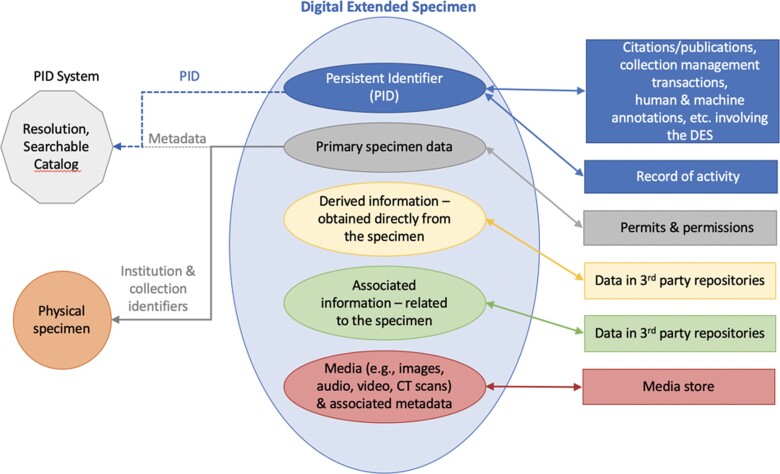Figure 1.
The Digital Extended Specimen (DES) as an enclosure for digital information about a physical specimen. Data about a specimen and pointers to data derived from a specimen, to data associated with a specimen, and to images or other media of the specimen and related objects are collated together as a DES digital object. A persistent identifier (PID) is assigned to uniquely identify the DES. A PID and metadata (the dashed or dotted lines) allow the DES to be indexed in searchable catalogs such that the specimen can be found, accessed, and used in line with relevant terms and conditions. This digital specimen on the Internet is tightly bound to the physical specimen it represents through institution, collection, and specimen identifiers included as part of the authoritative information about the specimen. A DES can be the focus for different kinds of transactions (e.g., annotations, citations, exchanges, loans, visits) and can have an associated long-lasting record of provenance (what was done, when, and by whom). Omitted from the figure for clarity, operations can be invoked against the DES to fetch data from it, to modify or update data, and to perform processing using the data. Also not shown, access control lists determine who has what permissions in relation to the DES content.

